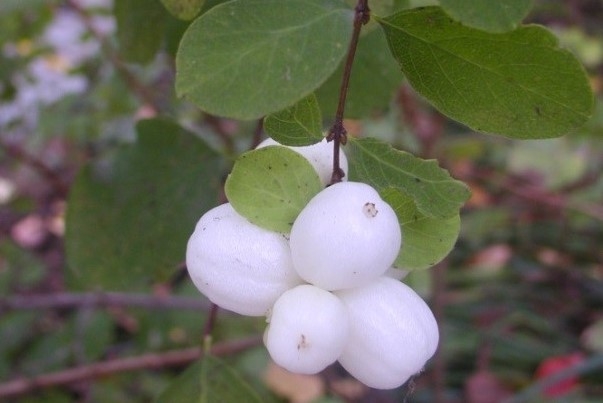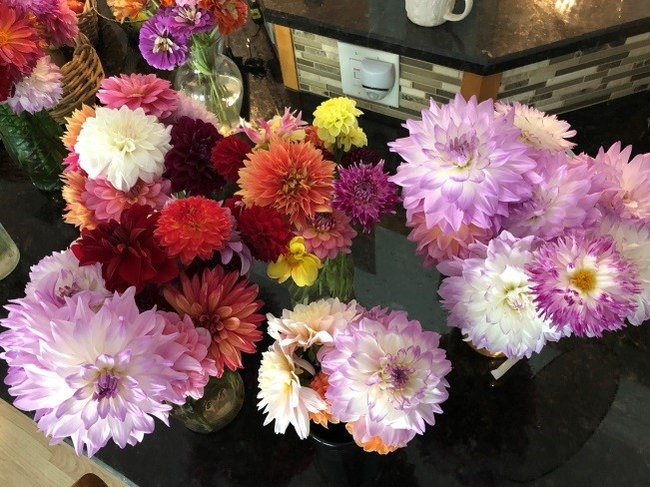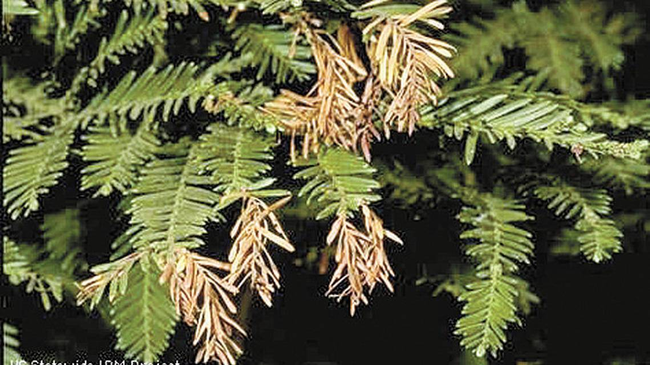SHRUB: Snowberry (Symphoricarpos albus) is a small shrub in my garden, several of which I can enjoy from my office window as I write this. They currently have the white berries that give way to its name. It blooms in spring with clusters of bell-shaped pink flowers which in the fall become clusters of white berries that last well into early spring. Fruit may be toxic to humans, but many birds do eat the berries, so apparently not toxic to them. These white berries make it a unique part of the plant world. It is a plant that tolerates a wide range of soil types though it thrives in clay and can handle shade and sun. They don't grow very large, about 4 feet tall and 6 feet wide, with arching branches and small leaves. They can be planted further apart to allow good air circulation because they are apparently vulnerable to powdery mildew although I have never observed such an infection. It spreads by way of rhizomes in its native habitat to form thickets. It is a native of the coast range from San Luis Obispo and north to Alaska. It is somewhat drought tolerant once established.
Dahlias come in a great variety of sizes, colors and forms.
Redwood trees often suffer needle loss in the Central Valley.





